- 1 Introduction – A New Trend in Green Building Materials
- 2 In-depth Understanding of Bamboo Composite Decking
- 3 Core Advantages of Bamboo Composite Decking
- 4 Wide Range of Applications for Bamboo Composite Decking
- 5 Buying Guide – How to Choose the Most Suitable Bamboo Composite Decking for You
- 5.1 Clarify Your Needs
- 5.2 Pay Attention to Product Specifications
- 5.3 Surface Treatment and Texture
- 5.4 Color and Design Matching
- 5.5 Budget Considerations
- 5.6 Brand and Certification
- 5.7 Consider Installation Method
- 5.8 Request Samples
- 5.9 Installation and Daily Maintenance
- 5.10 Installation Steps Overview
- 5.11 Daily Cleaning and Maintenance
- 5.12 Common Problems and Solutions
Introduction – A New Trend in Green Building Materials
The Dilemma of Outdoor Flooring Choices
In modern home and commercial space design, the importance of outdoor areas is increasingly prominent. Whether it's a cozy family patio, a vibrant commercial dining area, or a serene park pathway, a beautiful, durable, and easy-to-maintain outdoor floor is key to creating an ideal environment. For a long time, solid wood decking has been favored for its natural beauty. However, the limitations of traditional solid wood decking are becoming increasingly apparent: they require frequent maintenance (such as regular painting, sanding, and anti-corrosion treatment), are susceptible to moisture, pests, and UV radiation, leading to rot, cracking, or fading. Furthermore, their production often involves the consumption of forest resources, which goes against the globally advocated concept of sustainable development. These challenges have led people to seek more efficient and environmentally friendly alternatives.
Horizontal outdoor heavy bamboo wall panels
The Emergence of Bamboo Composite Decking
It is against this backdrop that Bamboo Composite Decking has emerged and rapidly become a new force in the outdoor flooring market. It cleverly combines the toughness and renewability of natural bamboo fibers with the durability and water resistance of recycled plastics, supplemented by various high-performance additives, all manufactured through advanced extrusion molding processes. This innovative composite material not only inherits the natural texture and warm feel of wood but also overcomes many of the shortcomings of traditional wood, demonstrating excellent durability, extremely low maintenance requirements, and significant environmental advantages. The advent of bamboo composite decking provides a new, sustainable, and high-performance outdoor flooring solution for consumers and designers pursuing high-quality living and environmental protection.
The Core of This Article
This article will delve into all aspects of bamboo composite decking, aiming to provide you with a comprehensive and in-depth guide. We will thoroughly analyze the unique advantages of bamboo composite decking, including its excellent environmental performance, unparalleled durability, minimal maintenance requirements, and aesthetic versatility. Concurrently, we will explore its wide range of application scenarios, from cozy residential patios to bustling commercial spaces. More importantly, this article will offer practical purchasing guidelines to help you select the most suitable bamboo composite decking product for your needs, and share detailed installation and daily maintenance tips, assisting you in effortlessly creating a lasting, beautiful outdoor space. Through this article, we hope to help you make an informed decision and choose a future-oriented green building material for your project.
In-depth Understanding of Bamboo Composite Decking
Definition and Composition
Bamboo Composite Decking is not purely wood or plastic, but an innovative composite material whose unique composition endows it with exceptional performance. It is primarily composed of the following three core ingredients:
- Bamboo Fibers: As the main filler, bamboo fibers form the skeleton of bamboo composite decking. Bamboo is known for its incredible growth rate and renewability, making it one of the most sustainable resources on Earth. Specially treated bamboo fibers retain the natural toughness, hardness, and stability of bamboo, providing the decking with excellent physical strength and natural aesthetics.
- Recycled Plastics: Typically, recycled high-density polyethylene (HDPE) or polypropylene (PP) plastics are used. These plastics are cleaned, crushed, and melted before being mixed with bamboo fibers. Recycled plastics not only provide the decking with excellent water resistance, moisture resistance, corrosion resistance, and insect resistance but also make bamboo composite decking an environmentally friendly “green” product, effectively reducing the burden of plastic waste on the environment.
- Additives: To further enhance the performance of bamboo composite decking, various functional additives are incorporated during the production process. These additives include UV stabilizers (to prevent fading), antioxidants (to extend service life), coupling agents (to enhance the bond between bamboo fibers and plastic), colorants (to provide a wide range of color options), and lubricants. It is this precise formulation that ensures bamboo composite decking maintains stability and aesthetics in various harsh outdoor environments.
Brief Overview of Manufacturing Process
The production of bamboo composite decking typically employs advanced extrusion molding technology, ensuring uniform material mixing and precise product shaping:
- Raw Material Preparation: First, dried bamboo fiber powder (or granules) is mixed with recycled plastic granules and various additives in precise proportions.
- High-Temperature Melting: The mixed raw materials are fed into an extruder, where the plastic melts under high temperature and fully fuses with the bamboo fibers and other additives, forming a uniform molten state.
- Extrusion Molding: The molten mixture is extruded through a die to form the predetermined board shape (e.g., solid or hollow profiles).
- Cooling and Shaping: The extruded boards are rapidly cooled in a water trough, allowing them to solidify and maintain their shape.
- Cutting and Surface Treatment: The cooled boards are cut into standard lengths and, if necessary, undergo surface treatments such as brushing, embossing, sanding, or wood grain treatment to enhance their aesthetics and slip resistance.
The entire process is highly automated, ensuring consistent and stable product quality.
Comparison with Traditional Materials
The advantages of bamboo composite decking are particularly evident when compared to traditional outdoor flooring materials:
| Feature | Bamboo Composite Decking | Solid Wood Decking | Standard WPC Decking |
|---|---|---|---|
| Main Components | Bamboo fibers, recycled plastics, additives | Natural wood | Wood powder, recycled plastics, additives |
| Environmental | High (renewable bamboo, recycled plastic) | Medium (depends on forest harvesting) | Medium (recycled plastic, wood powder source) |
| Maintenance | Extremely Low (no painting, staining, easy cleaning) | High (regular painting, anti-corrosion, pest control) | Low (no painting, staining, easy cleaning) |
| Durability | Excellent (anti-rot, anti-insect, anti-mold, UV-resistant, high strength) | Medium (prone to rot, insect damage, cracking, fading) | Good (anti-rot, anti-insect, anti-mold, but possibly less strength/impact resistance) |
| Density/Toughness | High (bamboo fiber structure provides higher density and toughness) | Varies (depends on wood type) | Medium (wood powder density lower than bamboo fiber) |
| Crack/Deformation Resistance | Excellent (stable composite structure) | Poor (prone to moisture/temperature changes) | Good (relatively stable) |
| Slip Resistance | Excellent (can design anti-slip textures) | Varies (depends on surface treatment) | Good (can design anti-slip textures) |
| Aesthetics | Rich colors/textures, natural and modern blend | Natural wood grain, limited color options | More color/texture options, may lack natural feel |
| Ease of Installation | High (often uses clip or hidden fasteners) | Medium (traditional screw fastening) | High (often uses clip or hidden fasteners) |
As seen from the comparison above, bamboo composite decking demonstrates unique advantages over traditional solid wood decking and standard wood plastic composite decking in terms of environmental friendliness, durability, maintenance convenience, and overall performance, making it an ideal choice for outdoor flooring.
Core Advantages of Bamboo Composite Decking
Bamboo composite decking stands out in the outdoor building materials market due to its series of significant core advantages. These advantages make it an ideal substitute for traditional wood and ordinary WPC decking, providing users with superior performance and a more sustainable choice.
Excellent Environmental Performance
The environmental characteristics of bamboo composite decking are one of its most striking highlights, perfectly aligning with today's pursuit of sustainable development and green building:
- Ultra-Fast Growth Rate and Renewability of Bamboo: Bamboo is one of the fastest-growing plants on Earth, with some species growing up to one meter per day. This means bamboo can mature and be harvested in just a few years, unlike wood which requires decades or even centuries to mature. This rapid renewability significantly alleviates pressure on forest resources and helps protect ecological balance.
- Utilization of Recycled Plastics: The plastic components used in bamboo composite decking typically come from recycled high-density polyethylene (HDPE) or polypropylene (PP) and other waste plastics. By reusing these waste plastics, bamboo composite decking effectively reduces landfill waste and plastic pollution, achieving resource recycling and embodying the concept of a circular economy.
- Low Carbon Footprint and Sustainable Development Philosophy: Compared to the logging, transportation, and processing of traditional wood, the production process of bamboo composite decking generally has lower carbon emissions. Its utilization of renewable and recycled materials makes it a truly green building material that aligns with sustainable development, helping to reduce environmental impact.
Unparalleled Durability
Bamboo composite decking is renowned for its outstanding durability, capable of withstanding various harsh outdoor environmental challenges, ensuring long-term use without frequent replacement:
- Extreme Climate Adaptability: The composite structure of the material gives it excellent dimensional stability, making it less prone to expansion, shrinkage, cracking, or warping due to drastic changes in temperature and humidity. Whether in hot summers, cold winters, or humid and rainy seasons, bamboo composite decking can maintain its structural integrity and appearance.
- Resistance to Biological Erosion: Unlike solid wood, which is susceptible to termites, fungi, and mold, bamboo composite decking due to its unique component formula, inherently possesses excellent anti-corrosion, anti-mold, and anti-insect capabilities. This significantly extends the service life of the decking and reduces maintenance costs caused by biological erosion.
- High Strength and Impact Resistance: The addition of bamboo fibers significantly enhances the decking's hardness and impact resistance. This means bamboo composite decking can withstand daily foot traffic, furniture placement, and even heavy object impacts, making it less prone to dents or damage, and highly suitable for high-traffic residential or commercial areas.
Minimal Maintenance Requirements
One of the major selling points of bamboo composite decking is its extremely low maintenance requirements, which saves users a lot of time and effort:
- No Need for Painting, Staining, or Sealing: Unlike solid wood decking that requires regular painting, staining, or sealing to protect its appearance and extend its life, bamboo composite decking comes with stable color and surface treatment from the factory. It will not fade, peel, or crack, eliminating the need for these time-consuming and laborious maintenance tasks.
- Easy Daily Cleaning: The surface of bamboo composite decking is smooth and non-absorbent, making daily cleaning very simple. Usually, a rinse with water or a wipe with mild soapy water is sufficient to remove dust, dirt, or stains. This makes cleaning outdoor spaces effortless.
Both Aesthetic and Functional
Bamboo composite decking provides excellent performance while also considering aesthetics and practicality:
- Rich Color, Texture, and Surface Treatment Options: Manufacturers offer a wide range of color choices, from classic wood tones to modern grays, to meet different design styles. At the same도가, through surface treatment processes such as brushing, embossing, and sanding, the decking can present realistic wood textures and even have anti-slip effects, adding richness to both visual and tactile experiences.
- Perfect Blend of Natural Wood Feel and Modern Simplicity: The bamboo fibers give the decking a natural wood feel, while the composite material's properties give it a modern simplicity and uniformity. This combination allows bamboo composite decking to integrate into natural landscapes while also adapting to the aesthetic needs of modern architecture.
- Excellent Anti-Slip Performance: Many bamboo composite decking products are designed with anti-slip properties, increasing friction through surface textures or additives. This ensures good anti-slip performance even in wet environments (such as after rain or by the pool), greatly enhancing the safety of outdoor spaces.
Convenient Installation Experience
Bamboo composite decking is typically designed with a convenient installation system, making the installation process more efficient and labor-saving:
- Clip-on or Hidden Fastening Systems: Most bamboo composite decking uses easy-to-operate clip systems or hidden fasteners for installation. This design not only makes the installation process faster, reducing reliance on specialized tools, but also avoids visible screw holes on the board surface, maintaining the overall aesthetics of the decking.
- Reduced Installation Difficulty: Compared to traditional wood, which requires precise alignment and drilling, the standardized production and convenient installation system of bamboo composite decking reduce installation complexity. Even non-professionals can relatively easily complete the installation by following instructions.
Wide Range of Applications for Bamboo Composite Decking
Bamboo composite decking, with its excellent performance and versatility, shows broad application prospects in various outdoor spaces. Whether it's creating a comfortable and livable residential environment or a commercial venue that values both practicality and aesthetics, bamboo composite decking can provide an ideal solution.
Residential Sector
In residential settings, bamboo composite decking can provide a safe, comfortable, and easy-to-maintain outdoor leisure space for family members:
- Outdoor Patios, Balconies, Rooftop Gardens: These are the most common and ideal application scenarios for bamboo composite decking. It can naturally extend indoor spaces outdoors, creating multifunctional areas for dining, relaxation, and gatherings. Its anti-slip, moisture-proof, and weather-resistant properties ensure that the patio in all weather conditions can maintain its beauty and practicality.
- Garden Paths and Courtyard Landscapes: Laying bamboo composite decking paths in the garden not only adds natural beauty but also avoids muddy conditions and weeds. It can harmoniously blend with surrounding plants and landscape designs, enhancing the overall style of the courtyard.
- Poolside Areas, Outdoor Shower Areas: The excellent anti-slip properties and waterproof characteristics of bamboo composite decking make it an ideal choice for poolside areas. It can effectively reduce safety hazards caused by slipperiness, and its chlorine resistance also ensures that it is not easily damaged by pool chemicals.
Commercial Sector
In commercial settings, bamboo composite decking can not only enhance the venue's grade and attractiveness but also meet the demands of high foot traffic and low maintenance costs:
- Outdoor Dining Areas for Restaurants and Cafes: Many restaurants and cafes tend to set up outdoor dining areas to attract customers. Bamboo composite decking can provide a durable, easy-to-clean, and attractive surface that maintains good condition even with frequent use and spills.
- Landscape Platforms for Hotels and Resorts: High-end hotels and resorts often need to create spacious, beautiful outdoor platforms for guests to relax. Bamboo composite decking can meet their requirements for durability, aesthetics, and low maintenance, providing guests with a comfortable experience.
- Parks, Walkways, Public Leisure Areas: In public places, flooring needs to withstand extremely high wear and tear and various weather conditions. The high strength and impact resistance of bamboo composite decking make it an ideal material for park walkways, plazas, and public leisure areas, capable of maintaining its function and appearance for a long time.
- Docks and Boardwalks (Requires Professional Evaluation and Specific Products): Although bamboo composite decking has excellent waterproof properties, in extreme environments such as docks and boardwalks that are continuously submerged in water, it is still necessary to choose advanced products specifically designed for waterside environments and to perform professional installation and regular inspections to ensure their long-term stability and safety.
| Application Scenario | Residential Sector | Commercial Sector |
|---|---|---|
| Main Function | Leisure, aesthetics, comfort, safety | Attracting customers, enhancing image, high durability, low maintenance |
| Typical Examples | Patios, balconies, garden paths, poolside areas | Restaurant outdoor areas, hotel platforms, park walkways, docks (specific products) |
| Foot Traffic | Medium | High |
| Maintenance Frequency | Low | Lower (but cleaning frequency may be higher) |
| Design Requirements | Focus on coordination with home style, warmth, and comfort | Focus on brand image, durability, safety, and aesthetics |
The versatility of bamboo composite decking makes it an ideal choice for various outdoor projects. Whether it's creating a cozy backyard oasis for a family or adding a unique charm to a commercial space, it can provide a durable, beautiful, and sustainable solution.
Buying Guide – How to Choose the Most Suitable Bamboo Composite Decking for You
Choosing the right bamboo composite decking is a crucial step to ensure your outdoor space is beautiful, durable, and meets your expectations. Faced with a wide array of products on the market, understanding how to evaluate and select is essential.
Clarify Your Needs
Before starting your purchase, it's important to clearly define your specific needs and expectations:
- Usage Scenario: What environment will the decking be used in? Is it a home patio, a poolside area, or a high-traffic commercial area? Different scenarios have different requirements for the decking's wear resistance, slip resistance, etc.
- Budget: Determine your affordable budget range. The price of bamboo composite decking varies by quality, type, and thickness.
- Expected Lifespan: How long do you expect the decking to last? High-quality products typically offer longer warranties and service life.
Pay Attention to Product Specifications
A deep understanding of product specifications will help you make a more professional choice:
- Thickness: The thickness of the decking is usually related to its strength and durability. Thicker boards are generally stronger and suitable for high-traffic areas. Common thicknesses include 20mm, 25mm, etc.
- Width: Different board widths will affect the laying effect and visual perception. Wider boards may appear grand, while narrower boards look more delicate.
- Length: Standard lengths are usually 2.2 meters, 2.9 meters, or 3.6 meters. Choose the appropriate length based on your laying area and the need to reduce waste.
- Board Type (Solid/Hollow):
- Solid Boards: Higher density, better strength and stability, strong impact resistance, closer to the feel of solid wood underfoot, but relatively higher cost and heavier weight. Suitable for high-traffic areas or areas requiring high load-bearing capacity.
- Hollow Boards: Lighter weight, lower cost, and easier to install. The internal structure usually has holes, but a reasonable design can ensure sufficient strength. Suitable for ordinary residential patios and other areas with low load-bearing requirements.
- Product Line Diversity: Professional manufacturers like Ningguo Kuntai Bamboo and Wood Co.,Ltd., located in “Bamboo Village” Xuancheng City, Anhui Province, typically offer a diverse range of bamboo products, including outdoor strandwoven bamboo decking, bamboo flooring, bamboo wall-cladding and siding, bamboo panels, plywood, bamboo boards, bamboo timbers and beams, bamboo ceiling and roof, as well as bamboo garden furniture. You can choose matching products based on project needs.
Surface Treatment and Texture
Surface treatment and texture directly affect the decking's aesthetics, feel, and slip resistance:
- Brushed: The surface is brushed to create a natural texture similar to wood, with a better tactile feel and good slip resistance.
- Embossed: Through molds, deep and shallow wood grains or stone patterns are pressed onto the surface, offering high realism, strong three-dimensional effect, and significant anti-slip performance.
- Sanded: The surface is sanded, resulting in a fine touch and uniform appearance, but slip resistance might be slightly lower than brushed or embossed.
- Wood Grain: Simulates the texture of real wood, providing the visual effect of various wood species (such as oak, teak).
- Anti-Slip Texture: Many products are designed with anti-slip grooves or textures on the surface, especially suitable for wet and slippery areas like poolside or docks, enhancing safety.
Color and Design Matching
Choosing the right color and design is crucial to ensuring the overall aesthetics of your outdoor space:
- Coordinate with Architectural Style: Consider the color of your house's exterior walls, roofing materials, and the style of other outdoor decorations. Choose colors and textures that match the overall architectural style. For example, modern architecture might suit gray tones or dark shades, while rustic styles might prefer warm wood tones.
- Blend with Surrounding Environment: Consider the colors of plants, landscape features, and outdoor furniture in your garden. Choose shades that blend harmoniously with the natural environment.
- Lighting Impact: Outdoor light intensity can affect the visual perception of decking colors. Observe samples under different lighting conditions to ensure the final effect meets expectations.
Budget Considerations
The price range for bamboo composite decking is wide, and reasonable budget planning is essential:
- Price Range: Prices are usually calculated per square meter, with significant variations from economy to high-end products. Solid boards are generally more expensive than hollow boards.
- Cost-Effectiveness: Don't just look at the price; also focus on product performance, warranty, and brand reputation. Sometimes, investing in higher-quality products can lead to a longer service life and lower long-term maintenance costs, thus achieving higher cost-effectiveness.
- Additional Costs: Besides the decking itself, you also need to consider joists, fasteners, trim, installation labor costs, and potential shipping fees.
Brand and Certification
Choosing products with certifications and good warranties provides you with more assurance:
- Choose Reputable Manufacturers: Prioritize professional manufacturers like Ningguo Kuntai Bamboo and Wood Co.,Ltd., which has a large modern factory (such as its 30,000 square meter KUNTAI factory) and years of industry experience (“Huihuang Bamboo” was established in 2002).
- Check Environmental Certifications and Quality Test Reports: Ensure the product meets international standards. For example, Ningguo Kuntai Bamboo and Wood Co.,Ltd. has obtained multiple certifications such as FSC, CE, SGS, ISO9001, and ISO14001, which are strong evidence of its product quality and environmental commitment.
- Understand Patent Technology: Pay attention to whether the manufacturer holds core technological patents. Notably, Ningguo Kuntai Bamboo and Wood Co.,Ltd. holds a US patent for outdoor bamboo decking (Patent No.: US11148318) and is authorized by this patent as a manufacturer and exporter in China. This demonstrates its innovation and technological leadership in the field of outdoor bamboo decking.
- Understand Warranty Terms: Carefully read the warranty period and scope provided by the manufacturer, which reflects their confidence in product quality. Review the warranty terms carefully to understand what is covered and what is excluded.
Consider Installation Method
The installation method affects both aesthetics and installation difficulty:
- Hidden Fastening System: This method conceals fasteners beneath the decking, leaving no visible screw holes on the surface, resulting in a more aesthetic finish, though installation might be slightly more complex.
- Visible Screw Fastening: Decking is directly secured to joists with screws, which is simpler to install, but screw heads will be visible on the surface.
- Clip-on System: Many bamboo composite decking products feature convenient clip designs, allowing for quick installation without special tools.
Request Samples
Physically experiencing the product is an important step in making a final decision:
- Feel the Material, Color, and Texture in Person: Pictures and descriptions may not fully convey the true texture of the product. Request small samples to observe their color, texture, and sheen in the actual installation environment.
- Experience Foot Feel and Slip Resistance: Personally touch and feel the surface of the samples to assess their slip resistance and comfort.
- On-site Visit: If conditions permit, it is recommended to visit the manufacturer's factory in person. For example, Ningguo Kuntai Bamboo and Wood Co.,Ltd. welcomes clients and customers to visit their factory, which can give you a more intuitive understanding of their production scale, quality control, and product lines.
Installation and Daily Maintenance
Correct installation and daily maintenance of bamboo composite decking are crucial for ensuring its long-term beauty and performance. Although it is known for low maintenance, following the correct steps and care habits can maximize its lifespan and outdoor experience.
Pre-Installation Preparation
Thorough preparation is the foundation of successful installation and can effectively prevent future problems:
- Ground Levelness Check: Ensure the installation area's ground is level, firm, and well-drained. Any unevenness can lead to warping or uneven stress on the decking. If necessary, ground leveling treatment should be performed.
- Substructure and Joist System:
- Joist Selection: It is recommended to use anti-corrosion wood, aluminum alloy, or wood-plastic composite joists of the same material as the bamboo composite decking or with strong weather resistance. Joists should have sufficient strength and stability.
- Joist Spacing: Determine the appropriate joist spacing based on the decking's thickness and board type (solid/hollow). Typically, joist center-to-center spacing is 30-45 cm, to ensure adequate support for the decking and prevent sagging or deformation.
- Drainage and Ventilation: Ensure good drainage and ventilation space beneath the joists to prevent water accumulation and moisture, which is crucial for the long-term stability of the decking.
- Tool Requirements: Prepare necessary installation tools such as a power saw (for cutting decking), electric drill, screwdriver, tape measure, level, chalk line, rubber mallet, and appropriate fasteners (hidden clips or stainless steel screws).
- Decking Acclimation: Before installation, place the bamboo composite decking in the installation environment for at least 24-48 hours, to allow it to acclimate to the local temperature and humidity, reducing dimensional changes after installation.
Installation Steps Overview
The installation of bamboo composite decking generally follows these basic procedures:
- Laying Joists: Fix the joists to the level ground according to the preset spacing and direction. Ensure the joists are level and leave sufficient expansion gaps (usually 8-10mm between the joists and walls or other fixed structures).
- Decking Laying:
- Start laying the first board from one side, securing it to the joists using starting clips or screws.
- Use hidden clips or special screws to secure subsequent boards to the joists and connect them to the previous board. Hidden clips automatically leave expansion gaps between boards.
- Leave Expansion Gaps: It is essential to leave appropriate expansion gaps (usually 3-5mm, refer to product instructions for specifics) between each board and between the decking and fixed structures like walls/columns, to accommodate thermal expansion and contraction due to temperature and humidity changes.
- Staggered Laying: It is recommended to use a staggered laying method, where the end joints of adjacent rows of boards are offset. This not only enhances the overall stability of the decking but also improves visual aesthetics.
- Cutting and Edging: Cut the decking with a power saw as needed to fit edges or corners. After installation, use matching trim or edging strips to beautify and protect the edges.
- Cleaning: Remove debris and dust generated during the installation process.
Daily Cleaning and Maintenance
The low-maintenance nature of bamboo composite decking is a significant advantage, and daily care is very simple:
- Regular Sweeping: Use a soft brush or broom to regularly remove dust, leaves, dirt, and other debris from the decking surface to prevent accumulation and scratching.
- Stain Treatment:
- Light Stains: For ordinary dust or dirt, simply rinse with water.
- Stubborn Stains: For oil stains, food residue, and other stubborn stains, use mild soapy water or a neutral cleaner with a soft brush, then rinse thoroughly with clean water.
- Avoid Using: Strictly avoid using strong acid, strong alkaline cleaners, solvent-based cleaners, or hard tools like steel wool brushes, as these may damage the decking surface.
- Avoid Dragging Heavy Objects: When moving heavy objects, try to lift them rather than drag them, to avoid leaving scratches on the decking surface.
- Winter Care Tips: In winter, promptly remove snow and ice from the decking. Avoid using metal tools to chip away ice, as this may damage the decking. If using de-icing agents, ensure they are non-corrosive to bamboo composite decking and rinse thoroughly after melting.
Common Problems and Solutions
Although bamboo composite decking is very durable, some minor issues may arise during long-term use:
- Minor Scratches: For minor surface scratches, they can usually be lightened by gently sanding the scratched area with fine-grit sandpaper (e.g., 400-600 grit), then wiping clean with a damp cloth. For deeper scratches, it may be necessary to consult the manufacturer for professional advice.
- Stubborn Stains Difficult to Remove: If you encounter particularly stubborn stains, you can try using cleaners specifically designed for composite materials. Test on a small, inconspicuous area first to ensure it does not damage the decking surface.
- Color Change: All outdoor materials may experience slight color changes when exposed to UV light for extended periods, which is a normal phenomenon. Bamboo composite decking has strong UV resistance, but slight natural fading may still occur. This is usually uniform and will not affect its overall aesthetics.
- Water Accumulation Issues: If water accumulates on the decking surface for a long time, check if the drainage system is clear and if there are any blockages beneath the joists. Water accumulation can lead to algae or mold growth, affecting the decking's appearance, and should be cleaned promptly.
By following the installation and maintenance guidelines above, your bamboo composite decking will be able to maintain its excellent performance and appealing appearance for a long time, providing lasting value to your outdoor space.

 English
English Deutsch
Deutsch
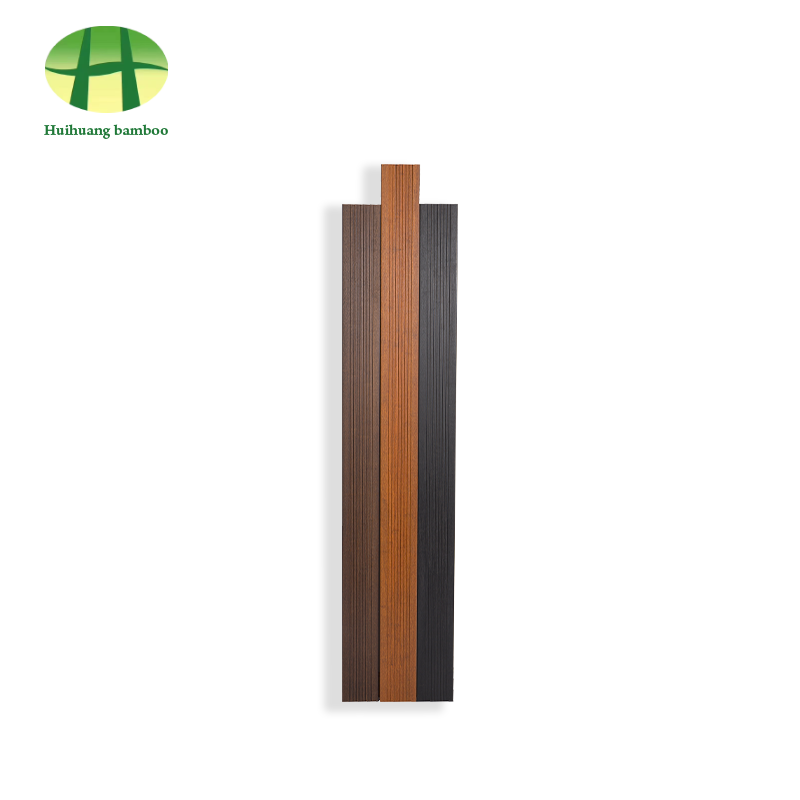
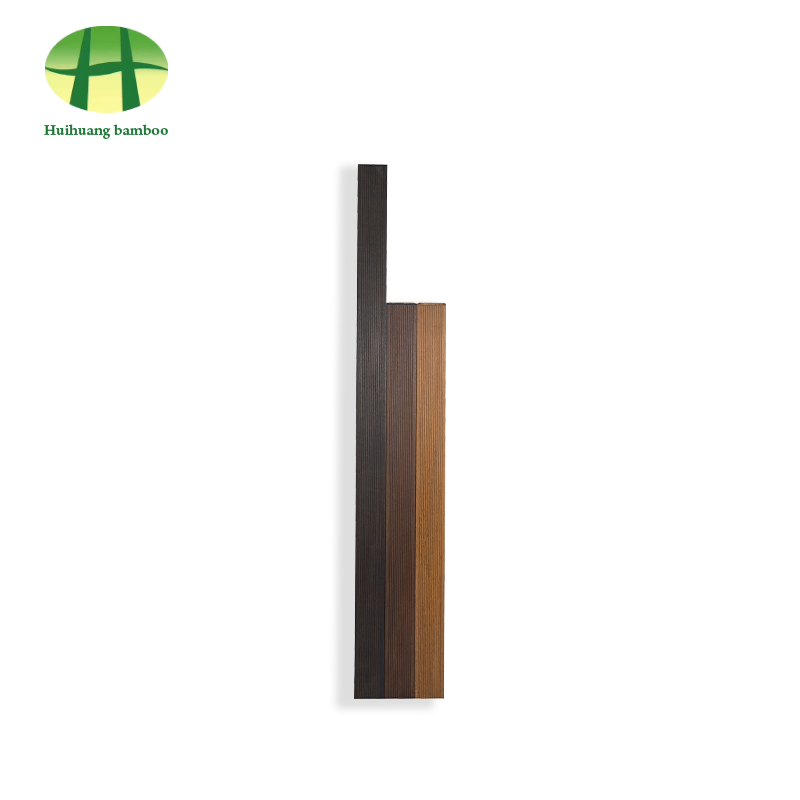
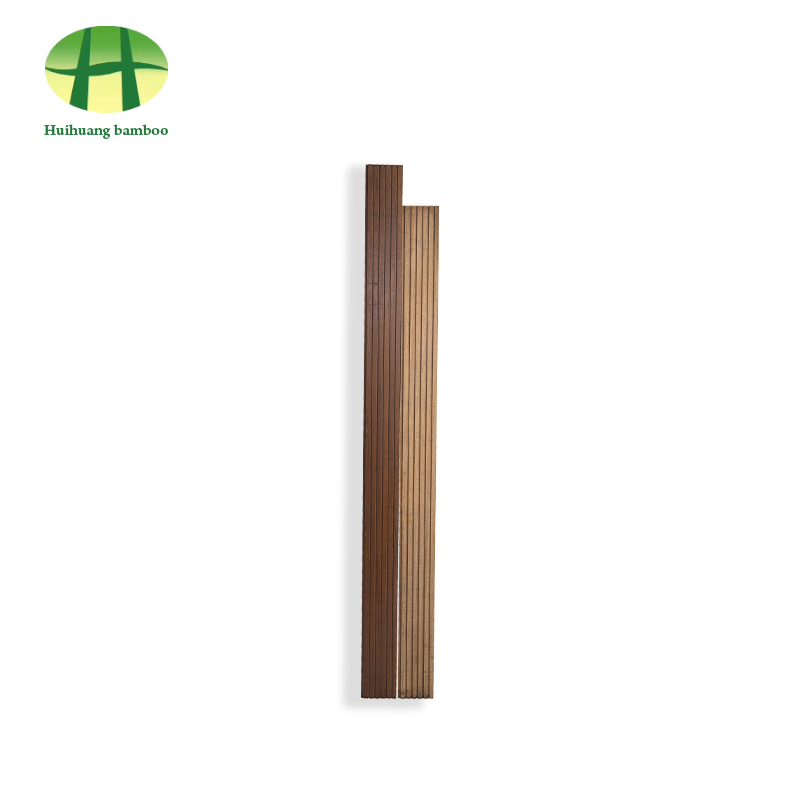
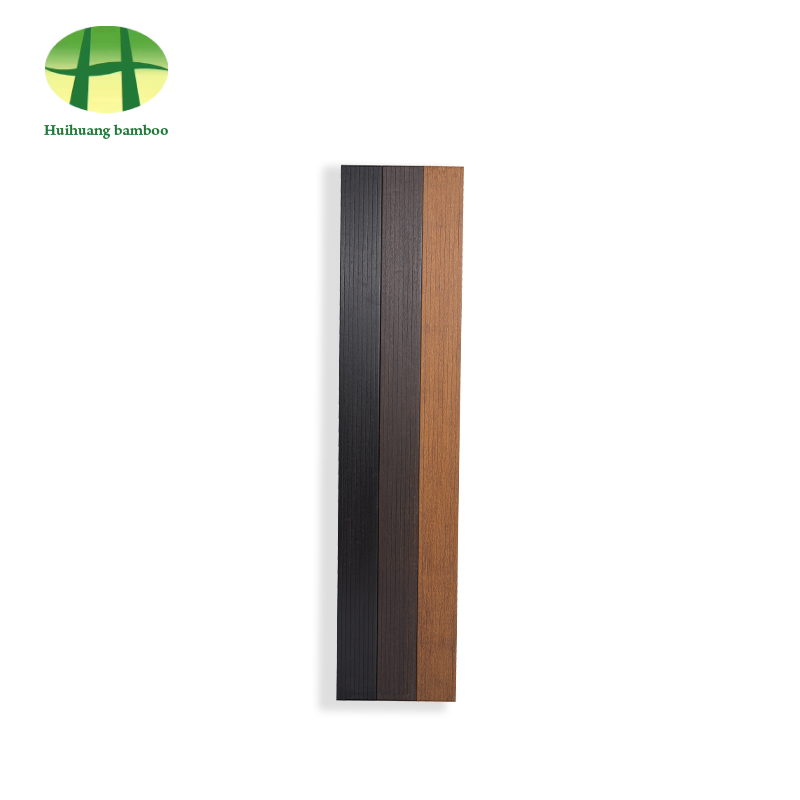
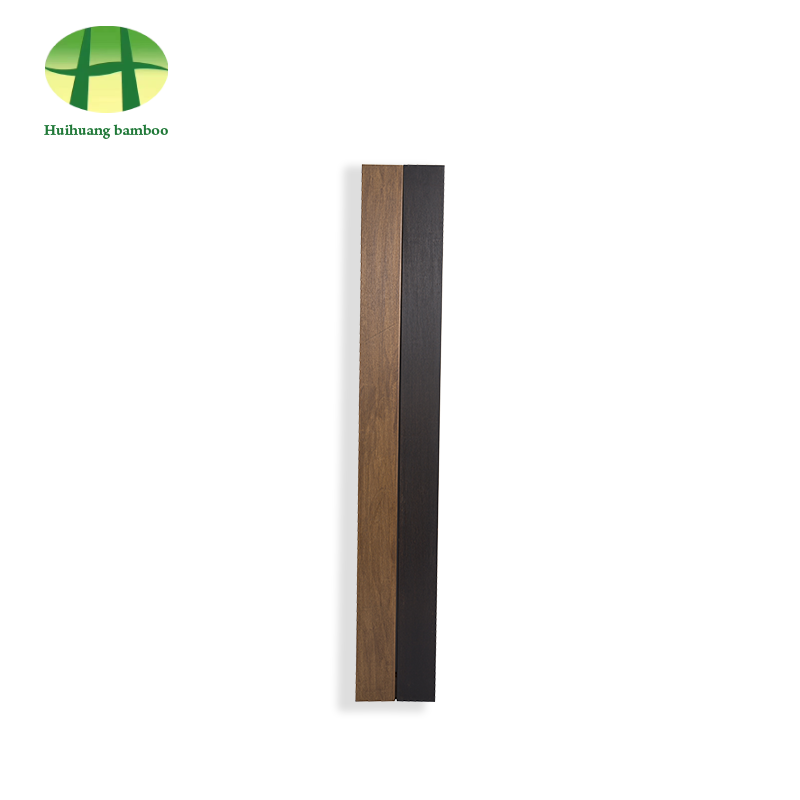
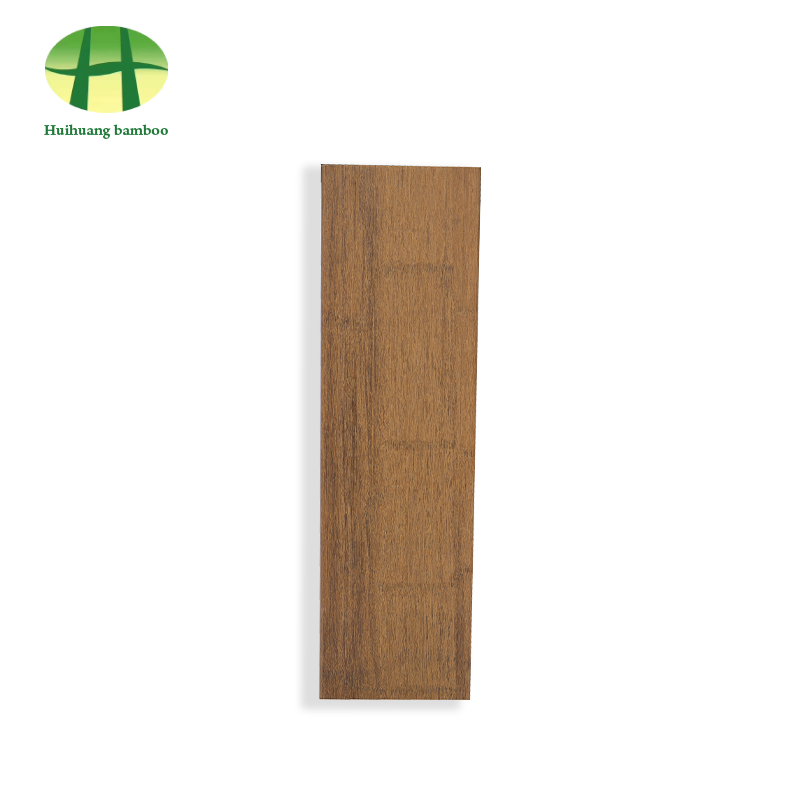

 +86-572-5215066 5216895
+86-572-5215066 5216895 office@hh-bamboo.com
office@hh-bamboo.com East Side of Huanggang RD,Ningdun County, Ningguo ,Xuancheng City,Anhui Province,China.
East Side of Huanggang RD,Ningdun County, Ningguo ,Xuancheng City,Anhui Province,China.